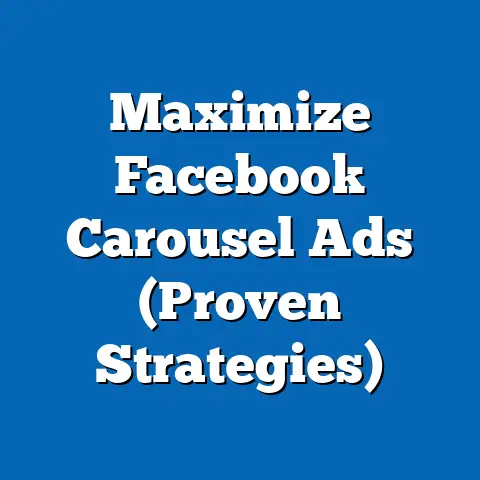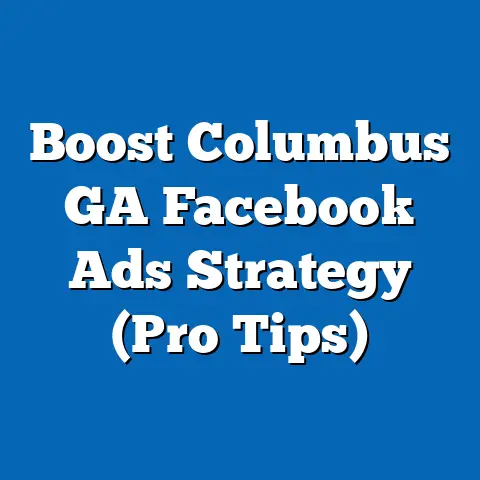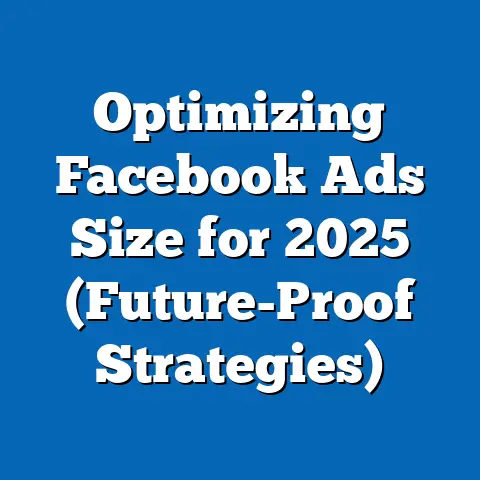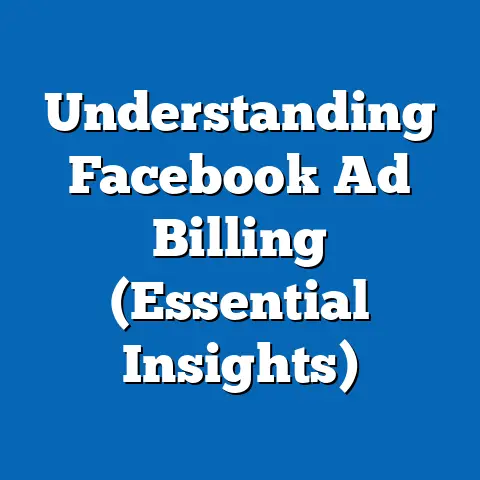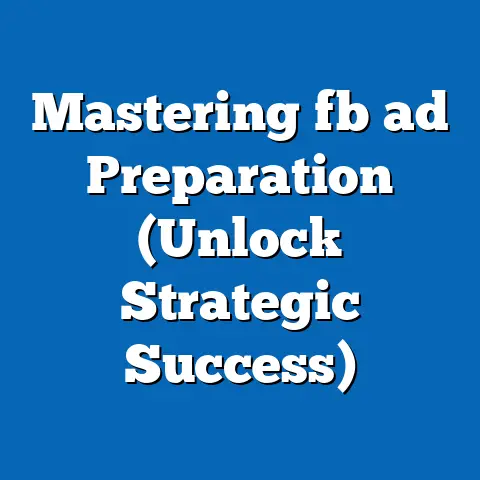Why Facebook Is Flooded with Ads (Expert Insights Revealed)
As a digital marketing expert, I’ve witnessed firsthand the incredible transformation of Facebook from a simple social networking site to a global advertising juggernaut. It’s a platform that has not only mirrored the evolution of digital communication but has actively shaped it, particularly in the realm of advertising. Today, it’s undeniable: Facebook is flooded with ads. But why? It’s not just about greed or an insatiable desire for profit. It’s a complex interplay of economic forces, technological advancements, and a deep understanding of human behavior.
The Evolution of Facebook as an Advertising Giant
Looking back, it’s hard to believe that Facebook started as a simple platform for Harvard students to connect. But its trajectory from a dorm-room project to a multi-billion dollar advertising behemoth is nothing short of remarkable. The initial focus was on building a community, and advertising was a relatively late addition.
One of the key milestones in Facebook’s advertising evolution was the introduction of Facebook Ads Manager. This tool, launched in 2007, democratized advertising by allowing businesses of all sizes to create and manage their campaigns. It was no longer just the big brands with deep pockets that could reach Facebook’s growing audience. Suddenly, small businesses, startups, and even individual entrepreneurs could tap into the power of targeted advertising.
What I find most impressive about Facebook is its ability to adapt to changes in user behavior and technology. As mobile usage surged, Facebook quickly optimized its ad platform for mobile devices, ensuring that advertisers could reach users wherever they were. Similarly, as video consumption exploded, Facebook invested heavily in video ad formats and targeting options. This constant adaptation has been crucial in maintaining its position as a leading advertising platform.
Takeaway: Facebook’s evolution as an advertising giant has been driven by its ability to democratize advertising, innovate with new ad formats, and adapt to changes in user behavior and technology.
The Economics of Advertising on Facebook
At its core, Facebook is a business, and advertising is its primary revenue stream. Understanding the economics of Facebook advertising is crucial to understanding why there are so many ads on the platform.
Facebook’s revenue model relies heavily on advertising. In fact, advertising revenue accounts for the vast majority of Facebook’s total revenue. According to Statista, Facebook’s advertising revenue in 2023 was over $131 billion! This staggering figure underscores the importance of advertising to Facebook’s overall business strategy.
The competitive bidding system for ad placements is another key driver of the high volume of ads on Facebook. Advertisers bid against each other to have their ads shown to specific audiences. The higher the bid, the more likely the ad is to be displayed. This creates a dynamic marketplace where advertisers are constantly competing for attention.
What I’ve observed is that this competitive bidding system incentivizes advertisers to create more ads and target more audiences in order to maximize their chances of reaching their desired customers. This, in turn, leads to a greater volume of ads on the platform.
But it’s not just about volume; it’s also about return on investment (ROI). Businesses advertise on Facebook because it works. The platform’s sophisticated targeting capabilities allow advertisers to reach highly specific audiences with relevant messages, leading to higher conversion rates and a better ROI. As more businesses experience success with Facebook advertising, more companies are drawn to the platform, further increasing the demand for ad placements.
Takeaway: Facebook’s revenue model, competitive bidding system, and high ROI for advertisers all contribute to the large volume of ads on the platform.
Targeting Capabilities and User Data
One of the biggest reasons why Facebook is such an attractive advertising platform is its unparalleled targeting capabilities. Facebook has access to a vast amount of user data, including demographics, interests, behaviors, and connections. This data allows advertisers to create highly targeted campaigns that reach the right people with the right message at the right time.
For example, an advertiser could target women aged 25-34 who are interested in yoga and live in a specific city. Or they could target people who have recently purchased a specific product or visited a particular website. The possibilities are virtually endless.
What I’ve learned is that this level of targeting allows advertisers to personalize their ads in a way that was never before possible. This personalization leads to higher engagement rates and better results. And as advertisers see these results, they are more likely to invest more in Facebook advertising, further increasing the volume of ads on the platform.
However, it’s important to acknowledge the privacy concerns surrounding Facebook’s data practices. In recent years, Facebook has faced increasing scrutiny over its handling of user data. Regulatory changes, such as the General Data Protection Regulation (GDPR) in Europe and the California Consumer Privacy Act (CCPA) in the United States, have forced Facebook to be more transparent about its data collection practices and give users more control over their data.
While these regulatory changes have had some impact on Facebook’s advertising capabilities, the platform still remains a powerful advertising tool. Facebook has adapted to these changes by offering advertisers new tools and features that allow them to target users in a privacy-friendly way.
Takeaway: Facebook’s sophisticated targeting capabilities and vast amount of user data are key drivers of the high volume of ads on the platform. However, privacy concerns and regulatory changes are also shaping the future of Facebook advertising.
The Impact of User Engagement and Content
User engagement plays a crucial role in shaping the types and frequency of ads served on Facebook. The more users engage with content on the platform (likes, shares, comments), the more data Facebook has about their interests and preferences. This data is then used to personalize the ads that users see.
For example, if a user frequently likes posts about travel, they are more likely to see ads for travel agencies and airlines. Similarly, if a user comments on posts about fashion, they are more likely to see ads for clothing brands and retailers.
I’ve noticed that this personalization can lead to a positive feedback loop, where users are more likely to engage with ads that are relevant to their interests. This, in turn, provides Facebook with even more data to personalize future ads.
Content creation and influencer marketing also play a significant role in driving ad proliferation on the platform. Brands are increasingly partnering with influencers to create sponsored content that promotes their products or services. This content is often indistinguishable from organic content, making it more likely to be seen and engaged with by users.
The relationship between organic content and paid advertising is also evolving. Brands are now leveraging both organic content and paid advertising to maximize their reach and engagement. For example, a brand might create a compelling video and post it organically on their Facebook page. They could then use paid advertising to promote that video to a wider audience.
Takeaway: User engagement, content creation, and influencer marketing all contribute to the proliferation of ads on Facebook. Brands are leveraging both organic content and paid advertising to maximize their reach and engagement.
The Future of Advertising on Facebook
Looking ahead, the future of advertising on Facebook is likely to be shaped by several key trends. Artificial intelligence (AI) is already playing a significant role in Facebook advertising, and its importance is only going to grow in the years to come. AI is being used to automate ad creation, optimize ad targeting, and personalize ad experiences.
For example, Facebook’s AI-powered ad creation tools can automatically generate ad copy and visuals based on a few simple inputs. This can save advertisers a significant amount of time and effort. AI is also being used to optimize ad targeting by identifying the most promising audiences for specific campaigns.
Another emerging trend is the rise of augmented reality (AR) ads. AR ads allow users to interact with products in a virtual environment before making a purchase. For example, a user could use an AR ad to virtually try on a pair of glasses or see how a piece of furniture would look in their home.
However, Facebook also faces potential challenges in maintaining its advertising dominance. Shifts in user preferences, such as the growing popularity of TikTok and other social media platforms, could lead to a decline in Facebook’s user base and advertising revenue. Emerging competitors, such as Amazon and Google, are also vying for a larger share of the digital advertising market.
Takeaway: The future of advertising on Facebook is likely to be shaped by AI, AR, and other emerging technologies. However, Facebook also faces potential challenges from shifts in user preferences and emerging competitors.
Conclusion
In conclusion, the proliferation of ads on Facebook is a complex phenomenon driven by a combination of economic forces, technological advancements, and a deep understanding of human behavior. Facebook’s evolution as an advertising giant, its revenue model, its sophisticated targeting capabilities, and the impact of user engagement all contribute to the high volume of ads on the platform.
The implications of a saturated ad environment are significant for users, advertisers, and the platform itself. Users may experience ad fatigue and become less receptive to advertising. Advertisers may face increased competition and higher ad costs. And Facebook may need to find new ways to balance its advertising revenue with the user experience.
As a digital marketing expert, I believe that the future of advertising on social media will be defined by innovation, personalization, and a focus on user experience. Facebook will need to continue to adapt and evolve in order to maintain its position as a leading advertising platform. But one thing is certain: advertising will continue to play a crucial role in the social media landscape for years to come. What new innovations will the future hold? Only time will tell, but I’m confident that the world of digital advertising will continue to surprise and evolve.

